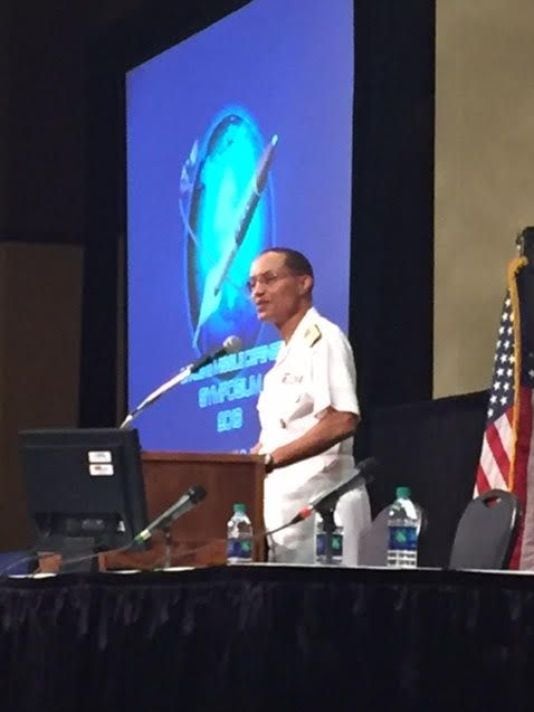The nature of today's world is everything is connected. This is true in the commercial, social, political and warfare spaces.
"We can't look at space, cyberspace and missile defense separately...as you know, they're connected and [interwoven] within a lot of areas," Adm. Cecil Haney, commander of Strategic Command, said Aug. 16 at the Space and Missile Defense Symposium in Huntsville, Alabama. "Frequently, we look at threats and vulnerabilities associated with space, cyberspace and missile defense as individual areas of concern. I would argue today that we can't afford to do so. We must look at them in a comprehensive manner as there are interconnections associated with these areas that must be understood and must be dealt with."
Haney added that most problems today are and should be viewed as global problems, as issues in one region tend to spill over to others.
Given this interconnectedness, Haney conceded that his mission areas as the commander of STRATCOM don't necessarily line up with the theme of the conference. However, "in order for my team to be successful," he said, it "requires success in those areas; space, cyberspace, missile defense." Haney offered how his six areas of priority line up with this interconnectedness.
- Deterring strategic attack against the U.S. while providing assurance to allies. Haney noted this is his most important priority and ensuring adversaries do not achieve their goals requires a wide-ranging set of missions and capabilities
- Ensuring the nation has a safe, secure, effective and credible strategic nuclear deterrent force. This mission set is dependent on success in space and cyberspace – while some might think the success is merely dependent on the triad. "While these capabilities are obviously necessary, our deterrent is much, much more than nuclear weapons and platforms," he said. It includes a robust intelligence apparatus, space sensing capabilities, land based radars and missile defense, to name a few, he added.
- Delivering comprehensive warfighting solutions. Threats must be viewed across the spectrum of conflict "where escalation can occur with more than one adversary and can be across more than one region and can span space, cyberspace, air, land and sea domains," said Haney. "Escalation can occur at any point…with more than one adversary in multiple domains to include below threshold activities that would not ordinarily prompt international action. In order to convince any adversary that they cannot escalate their way out of a failed conventional conflict and restraint is always a better option, we must have a deeper, broader understanding of our potential adversaries so that we can deny action." Haney added that it is important to look at military capabilities holistically and integrate them across spectrums as well as employ a whole-of-government approach.
- Addressing the challenges in space and cyberspace. "Enough said," Haney asserted.
- Building, supporting and sustaining partnerships. "We aim to work seamlessly with our other combatant commands, across the federal government, the commercial sector, academia and with partners and allies to apply the scope of U.S. Strategic Command’s portfolio toward a synchronized pursuit of national objectives," he said.
- Anticipating change and confronting uncertainty with agility and innovation. "Some decision-making requires thorough analysis to prioritize our activities with flexible and agile and adaptable thinking," Haney said. "This effort includes a variety of war games, demonstrations, experiments and of course exercises."
Mark Pomerleau is a reporter for C4ISRNET, covering information warfare and cyberspace.








